The Kenyan landscape offers a massive range of wildlife and photographic opportunities to create a comprehensive portfolio. With more than a decade of experience in Kenyan wildlife adventures, Nature Wanderers understands and values individual client requirements. With our regular game drives, the goal is to witness and capture the diversity of wildlife in individual locations. We also specialize in creating species-specific tours, which gives our clients the chance of concentrating on an individual species to create a unique set of photographs. Over the years Nature Wanderers has worked with numerous wildlife photographers and has also conducted specialized programs like remote shooting and specie centric expeditions focused on rare species of cats like caracals.
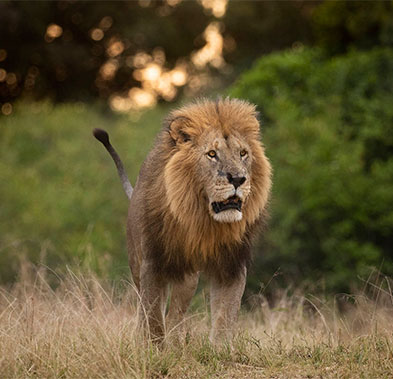
With three rivers passing through, the Masai Mara National Reserve is known for its large populations of lions, leopards, and cheetahs, apart from the stunning Great Migration. Locally called the Mara, these plains are a part of the larger Serengeti ecosystem, which majorly constitutes of vast savannah grasslands along with acacia and bush vegetation. This landscape is home to a diverse selection of magnificent species and the landscape offers unhindered views stretched to the horizon. The clouds create magic in the sky and the ‘golden hour’ in the Mara emerges twice every day with ample opportunities to photograph stunning scenery and wildlife in their natural habitat. The light on the horizon creates magical hues and perfect backdrops for breathtaking imagery.
Each year, millions of grazing herds of wildebeests, zebras, gazelles, and other antelopes embark on a clockwise migration through the African plains. This mass passage is known as the Great Migration and witnessing the scale of this movement is not only a great experience, it also creates abundant photographic opportunities packed with incredible action. As the herds cross the Mara river, crocodiles lie in wait for an easy meal. On the plains, predators, especially lion prides have been seen hunting the migrating herds in synchronized movements.
All the members which make up the ‘Big Five,’ namely African lion, leopard, African elephant, cape buffalo, and the Black rhinoceros, are found in Masai Mara. Apart from these, cheetahs are another favorite for photographers in this park. Hyenas, jackals, and foxes are the other predator species in the plains. Hippopotamus and crocodiles are found in the river bodies in large groups. The distinct Masai giraffe and as many as five different kinds of antelopes also call the Mara home. Close to 500 species of birds make up the diverse fauna spread.
With Africa’s highest peak, the snow-capped Mount Kilimanjaro in the background, Amboseli National Park is best known for getting up and close with African elephants. The park is dotted with swampland and savannah grasslands which results is a great opportunity to track and spot wildlife. The habitat also includes sulfur springs and dry lake beds. The majority of the wildlife can be encountered around the permanent swamp areas, which form a natural marshy belt in the middle of the park. These marshes are a favorite of the elephants which love to wallow in the mud, while the hippos can be seen around the edges.
The visual delight of photographing large herds of bush elephants against the backdrop of Mt. Kilimanjaro is only possible here. Amboseli is another location in Kenya to observe and photograph the Big Five. Cheetahs and spotted hyenas complete the predator populations while impalas, giraffes, zebras, and gnus are the other big subjects to photograph.
Observation Hill is a well-known spot within the park from where one can view the entire area in its full glory. The weather is mild and dry and Amboseli hosts over 370 bird species.
The local Masai people can also be visited in their homes giving you the chance of experiencing an indigenous culture and lifestyle.


Experience one of the most incredible spectacles in the natural world- The Great Migration. Witness the Big Five and soak yourself in the culture of the ancient Masai people. Kenya will leave you wanting for more as chasing the sun will become as exciting as watching the Cheetah chase a Gazelle in the Savannah.
Book A Destination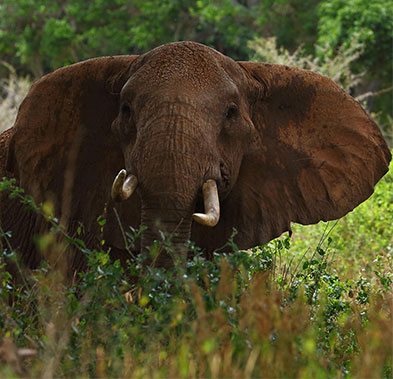
Famous for being ‘The Big Five’ location, Tsavo East and Tsavo West together make up the Tsavo Conservation Area. Named for the Tsavo river, the two parks are divided into by road and railway tracks that run across the area. Tsavo East is one of the oldest and largest parks in Kenya, famous for the Tsavo lions, a population where the males are often seen lacking the distinguished manes. Even after having a large river passing through the landscape, Tsavo East has sparse and thinly spread foliage, which makes wildlife spotting much easier here.
This half of the park has many geographical attractions as well. The Mudanda Rock is an excellent vantage point to spot herds of elephants as this isolated rock hill acts as a water catchment and becomes a natural dam. Running a length of 290 km and made by the world’s longest lava flow, the Yatta plateau is another surreal landscape to visit. A series of white-water rapids, the Lugard Falls is also an area to explore.
The fauna of Tsavo East comprises of many interesting species. Apart from cheetahs, lions and hyenas, chief amongst them is the aardwolf, bush baby, African civet, dik dik, African hunting dog, different kinds of antelopes, zebras and a large variety of mongooses.
Tsavo West boasts of a rhino reserve, guided trails along the Tsavo river and rock-climbing opportunities. This part of the park has a rugged yet beautiful wilderness. Rocky ridges and belts of riverine vegetation are interspersed with open grasslands, Acacia woodlands, and sparse scrublands. The Mzima Springs gushes out from under the lava rocks and is one of the most breathtaking sceneries to witness in Africa. A diverse range of wildlife in these spectacular habitats makes Tsavo West one of the best places in Africa to view magnificent wildlife.
Apart from the Big Five, the Tsavo Conservation area also offers a wide range of species including the Masai giraffe, hippopotamus, Lesser kudu, along with a large variety of birds, including the ostrich. Dotted with baobab trees and hills, the landscape is largely flat. The Tsavo elephants are also known as red elephants as they tend to roll and spray themselves with the red earth of the area.
The Rift Valley Lakes in Africa is one of the deepest, oldest and largest lakes in the world. Known for its massive flocks of Greater and Lesser Flamingoes, Lake Nakuru is one of the most famous of these soda lakes. A bushy and sparsely wooded grassland surrounds the lake and this habitat offers a wide range of ecological diversity, including a large population of big game species.
A large number of flamingoes often seem like a moving, shifting mass of fuchsia pink, covering the lake surface. Their numbers can reach up to more than one million individuals, making this one of the greatest bird spectacles on earth. Waterbuck can be easily spotted here, and the lake boasts of a large variety of both water and terrestrial bird species, a total of about 450. The area also attracts mammals like the rare Rothschild’s Giraffe, baboons, Dik Dik, rhinos, Lions, Cheetahs, and Leopards.
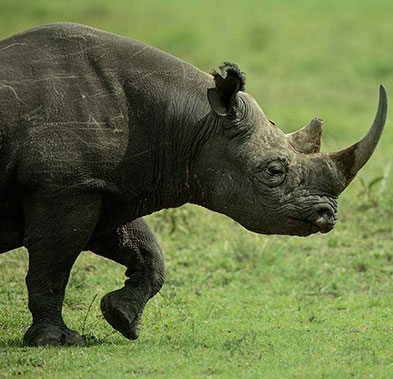
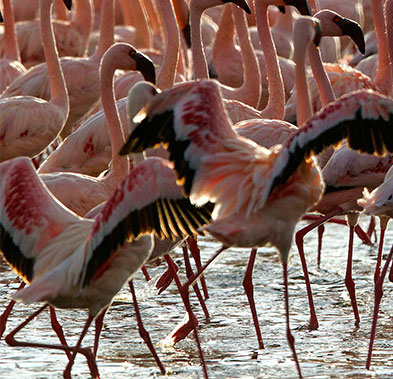
Another location is known for its large flocks of Lesser Flamingoes and Greater Flamingoes, Lake Bogoria is a saline body of water which lies in a volcanic area. This location hosts one of world’s largest Lesser Flamingo populations at times. The lake is backed by the Siracho Escarpment on one side and surrounded by geysers and hot springs, which can erupt as high as five meters. The area can get really hot during the day and the best times to visit are early mornings and evenings. The lake can be explored on foot as well and the only wooded area towards the southern end hosts species like Leopards, greater Kudu, Caracals, Buffaloes, and Gazelles.
With thick riverine forests, acacia and palm groves, Samburu National Reserve is one of the two areas made famous in the book Born Free. The park is a lowland area and is not visited by too many tourists, making it a peaceful and serene setting for great game drives. The Ewaso Ngiro river is one of the main locations as it is the main water source for the majority of the animal species in this otherwise arid and dry park. The Samburu National Reserve was made famous by a lioness who had adopted oryx calves. Many of the game species of the Northern Kenyan wilderness can be seen in Samburu’s habitat. Apart from the three big cats- Leopards, East African Lions, and the Tanzanian Cheetah, Samburu is home to the Gerenuk, Reticulated Giraffe, Oryx, and the Grevy’s Zebra. The park also hosts a large array of bird species, including the Secretary bird and various vultures. The riverbanks are ideal for spotting crocodile populations and herds of elephants as well.
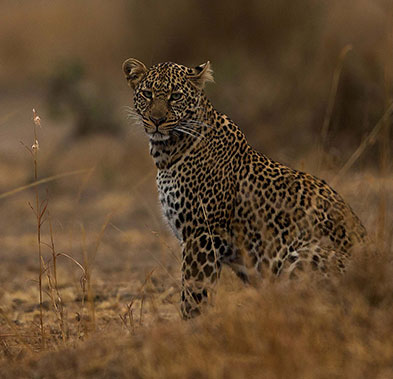
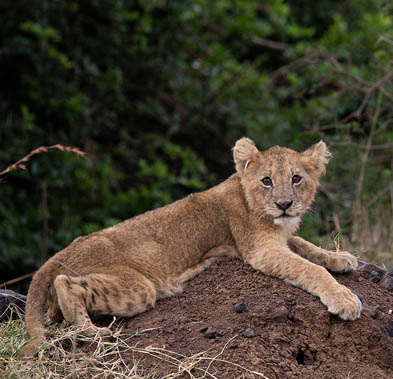
Close to the capital city of Kenya, Nairobi National Park provides the distinct opportunity to view and photograph African wildlife in the backdrop of a cityscape. This is a unique visual combination where wild animals can be photographed with modern man-made structures in the composition. Due to this discrepancy, the park offers one of the oddest yet easily accessible game drive experiences. The Nairobi National Park is also known to have the world’s densest population of the endangered Black Rhinos. The park has a diverse range of habitat, which plays a key role in the sustenance of the various species found here. Along with open grasslands, bush forests, long grass, and rocky valleys, Nairobi National Park is also dotted with scrubs and acacia and a river system. This results in a wide variety of bird species, apart from hosting Lions, Leopards, Cheetahs, Hyenas, Giraffes, Antelopes, and Buffaloes. Spotting the resident Cheetahs and Leopards requires a bit of patience in this park, but the lions and Hyenas are sighted regularly.